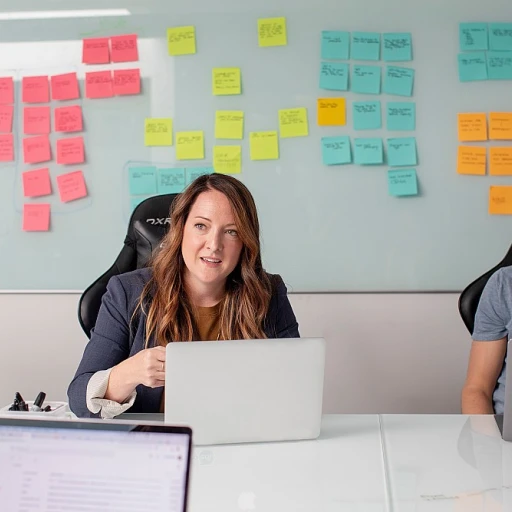
Understanding Social Emotional Learning
Understanding social emotional learning is key to crafting effective Individualized Education Program (IEP) goals that support students in developing their emotional and social skills. Social Emotional Learning (SEL) involves equipping students with necessary skills to manage emotions, establish healthy relationships, and make responsible decisions. These skills are fundamental for students’ personal and academic success, and therefore, SEL becomes a critical component in designing education plans.The Essence of Social Emotional Learning
Social Emotional Learning isn't just a buzzword in education; it is a structured approach to help students acquire essential life skills. Emotional regulation, social interactions, and maintaining personal space are a few aspects that students need to master. By regularly engaging in SEL activities, students will demonstrate improved emotional skills and better social interactions with their peers. Students will develop these skills through varied opportunities measured during their educational periods. These could be peer collaboration tasks or teacher observation sessions focused on assessing goal attainment. The frequency of interaction and the appropriateness of behavior can be measured through both peer feedback and teacher reports, ensuring that the social emotional goals are met in an engaging manner. Emphasizing SEL in school environments not only fosters a sense of community but also contributes to positive behavior and attitudes. It lays the groundwork for a student's ability to interact in socially acceptable ways, which aids in forming friendships and resolving conflicts. Ultimately, by integrating SEL into students' educational journeys, the outcomes are not purely academic but also contribute to their holistic development.The Role of IEPs in Supporting SEL
The Critical Intersection of IEPs and Social Emotional Learning
Individualized Education Programs (IEPs) serve as a vital tool in integrating social emotional learning (SEL) into the educational journey of students. While academic benchmarks often dominate the conversation around IEPs, the significance of incorporating emotional skills and social competencies is gaining recognition. By including social and emotional goals within IEPs, educators can tailor educational experiences that promote holistic student development.
IEPs offer a structured framework that allows educators to identify and support the unique emotional and social needs of students. This personalized plan can guide teachers in crafting specific strategies for enhancing social interactions, emotional regulation, and personal behavior within appropriate learning settings. Actions such as how a student will demonstrate personal space awareness and identify appropriate peer interactions can be clearly outlined.
A key advantage in embedding SEL into IEP goals is the opportunity for measurable progress. With clearly defined objectives, both teachers and students can track achievements over a specified period. Whether through teacher observation, frequency measured with checklists, or peer interactions, each goal offers tangible metrics to assess growth. Here, the interplay between academic targets and social emotional skills becomes evident, ensuring that students develop a well-rounded skill set.
Educators are presented with the challenge of ensuring these emotional goals are not only ambitious but also attainable. Recognizing and addressing these through IEPs, facilitates opportunities measured in a structured manner, reinforcing the goal of fostering environments where the student will excel both personally and socially.
Setting SMART Social Emotional Goals
Establishing Clear and Achievable Social Emotional Targets
The formulation of effective social emotional goals within an Individualized Education Program (IEP) framework often hinges on the SMART criteria: Specific, Measurable, Achievable, Relevant, and Time-bound. This structured approach is instrumental in ensuring that emotional and social skills are targeted in a manner that is both intentional and assessable.- Specific: Social emotional IEP goals should be explicit in identifying the particular skills or competencies the student will develop. For instance, a goal might focus on enhancing a student’s ability to manage personal space during interactions with peers, or improving emotional regulation through breathing techniques.
- Measurable: Goals must encompass clear criteria for success. This can be achieved through consistent teacher observation of social interactions, where the frequency measured of appropriate behaviors during specific periods is documented. For example, a goal could be: "The student will demonstrate appropriate social skills by initiating a conversation with a peer twice a week, across three consecutive weeks."
- Achievable: Goals need to be attainable given the student's current level of emotional and social proficiency. Setting goals that are challenging yet within reach helps in promoting a sense of accomplishment and confidence among students.
- Relevant: Focus on goals that are meaningful to the student’s personal development, aligning with both their individual needs and broader educational objectives. This relevance encourages the student's engagement and persistence in their emotional learning journey.
- Time-bound: Establishing a clear timeframe within which the goal should be achieved supports adjusting instructional strategies and ensures timely opportunities for the evaluation of progress. Regular opportunities measured over a specified duration help in maintaining a consistent path toward developmental milestones.
Strategies for Implementing SEL Goals
Proven Approaches for Effective SEL Goal Application
Implementing Social Emotional Learning (SEL) goals within an Individualized Education Program (IEP) requires a structured approach, ensuring that students not only gain relevant emotional skills but also demonstrate improved social interactions with peers. By effectively incorporating SEL goals, educators provide students the opportunity to enhance their personal growth and social adeptness.- Identify Individual Needs: Determining the specific emotional and social skills a student needs to focus on is the first step. Students will identify any emotional regulation issues, which can be measured through teacher observation, ensuring that goals are appropriately tailored to personal learning needs.
- Integrate into Daily Routines: Including SEL activities in the daily schedule allows for consistent exposure and practice. This can range from role-playing social scenarios to practicing appropriate personal space with peers. Such strategies enhance opportunities for students to demonstrate improvement in behavior and emotional skills.
- Utilize Peer Interactions: Social interactions provide real-world practice for students to apply their SEL goals. Partnering them with peers during group tasks allows for the frequency of social skills practice to be measured and adapted as necessary.
- Offer Constructive Feedback: Continuous feedback based on teacher observations is critical. When students are aware of their progress and areas of improvement, they are more likely to stay engaged. Educators should frame feedback in a positive manner to maintain motivation and engagement.
Overcoming Challenges in SEL Goal Setting
Addressing Roadblocks in Achieving Emotional IEP Goals
Overcoming challenges in setting and achieving social emotional IEP goals is a critical step in ensuring that students can enhance their emotional skills and social interactions. It’s essential to identify both external and internal barriers that might affect a student’s progress.- Inconsistent Opportunities: Students require consistent opportunities to practice new social skills. These opportunities can be measured through social interactions with peers, whether in structured settings or informal environments. Schools need to ensure that these interactions occur regularly and are structured to promote learning.
- Lack of Appropriate Strategies: Educators and parents must be equipped with appropriate strategies to support social emotional learning. This includes comprehensive training and resources that focus on individual emotional regulation and social cues.
- Behavioral Challenges: Addressing behavioral issues that hinder goal achievement is crucial. A student might struggle with understanding personal space or peer relations, and a detailed plan to address these challenges should be incorporated into the IEP goals.
- Monitoring and Adjustment: Regular monitoring is key to overcoming challenges in SEL goal setting. Goals must be measured by teacher observation and adjusted as necessary. Frequency measured progress helps ensure that the student will demonstrate growth over a set period.
- Job-Embedded Support: To maintain consistency, teachers should engage in ongoing professional development that is job-embedded. This helps in refining methods to support social and emotional goals and provides a framework for measuring success through realistic, achievable goals.












